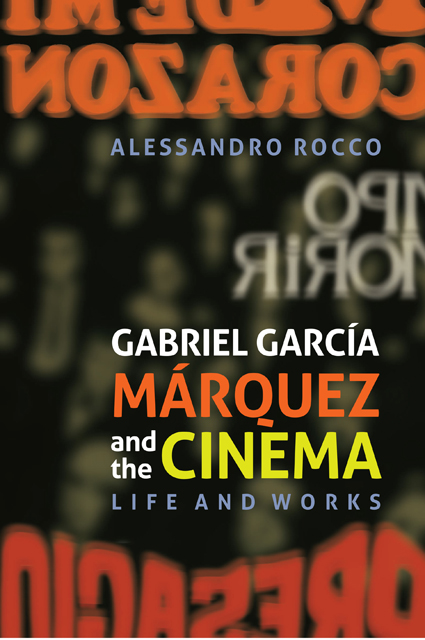Book contents
- Frontmatter
- Dedication
- Contents
- List of Illustrations
- Acknowledgements
- Preface
- 1 The Cinema in the Life of García Márquez
- 2 Tiempo de morir
- 3 Films from the 1970s: The Ghosts of Realism
- 4 Screenplay and Revolution: ¡Viva Sandino!
- 5 Magic Realism in the Cinema
- 6 Six Episodes for Cinema and Television: Amores difíciles
- 7 Con el amor no se juega
- 8 The Fantastic on Television: Me alquilo para soñar
- 9 History and Tragedy: Edipo Alcalde
- Afterword: Works by García Márquez Adapted for the Cinema
- Bibliography
- Index
5 - Magic Realism in the Cinema
Published online by Cambridge University Press: 24 February 2023
- Frontmatter
- Dedication
- Contents
- List of Illustrations
- Acknowledgements
- Preface
- 1 The Cinema in the Life of García Márquez
- 2 Tiempo de morir
- 3 Films from the 1970s: The Ghosts of Realism
- 4 Screenplay and Revolution: ¡Viva Sandino!
- 5 Magic Realism in the Cinema
- 6 Six Episodes for Cinema and Television: Amores difíciles
- 7 Con el amor no se juega
- 8 The Fantastic on Television: Me alquilo para soñar
- 9 History and Tragedy: Edipo Alcalde
- Afterword: Works by García Márquez Adapted for the Cinema
- Bibliography
- Index
Summary
In the 1980s, as we have seen, García Márquez was able to realise two film projects going back a number of years. First, the script for Eréndira, which he had written in the late 1960s, was made into a film; and secondly, he was at last able to work on a film with the director Fernando Birri, a great friend of his from their time together at the Centro Sperimentale in Rome. The latter chose to adapt the short story ‘Un señor muy viejo con unas alas enormes’, and this meant that the two films, shot respectively in Mexico and Cuba, both feature one particular aspect of García Márquez’s narrative work, most familiar to his readers from the collection of short stories entitled La increíble y triste historia de la cándida Eréndira y de su abuela desalmada.
While the reality being narrated in these texts is always recognisably Latin American, it takes on the character of a mythical territory, populated by supernatural characters and events belonging to the realms of fable, the grotesque or the surreal. The fantastic transfiguration often has a spectacular or carnivalesque di-mension: the universe of the fairground, with its attractions, circus and freak shows. Both in Eréndira and in ‘Un señor muy viejo’ García Márquez seems to be intent on narrating Latin American reality by observing how characters that are abnormal, bizarre or mysterious trigger a dimension of spectacle which in turn engenders new fairs, circuses and freak shows. As Vargas Llosa has put it: ‘what most gives the story of Eréndira and her depraved grandmother its air of familiarity […] is the atmosphere of the fairground, of a popular street entertainment which prevails from start to finish.’ At the same time, the intention goes beyond the mere act of reporting or a straightforward representation of a world that nonetheless remains the theatre for episodes of riches and poverty, coercion and liberation.
These two episodes, lying somewhere between the realms of fable and the circus, each had an important director for their film versions: Ruy Guerra and Fernando Birri. Both, like García Márquez himself, were influenced by the poetics of Italian Neorealism, as Birri recalls:
Gabo, like me, came from literature but had recognised the cinema as his true means of expression.
- Type
- Chapter
- Information
- Gabriel García Márquez and the CinemaLife and Works, pp. 93 - 110Publisher: Boydell & BrewerPrint publication year: 2014



